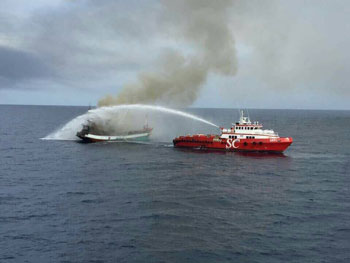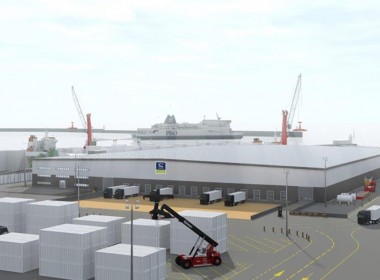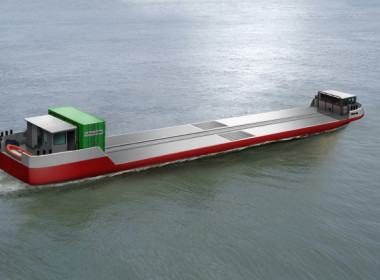COLUMN | Learning more about electric cargo fire risks [Grey Power]

Regulation, as the lucky passengers of Titanic might have reflected as they sat in their freezing lifeboats, takes some time to catch up with reality. It is not particularly that there may be any evil intent in the aims of clever inventors or those promoting technological advances, but their natural optimism will invariably minimise or even ignore any downsides from their exciting development. Progress requires prioritisation.
Being of a certain age, I always think about the advent of the “radar assisted collision” as a perfect example of this, with the enthusiasm for a means of navigating in bad visibility, silencing any concerns about the lack of regulation for the use of radar and requiring many years to pass until any training was mandated. And you will be aware of so many different maritime advances throughout the years, which predated any international regulations for their use, invariably accelerated only after loss of life, or a spectacular disaster.
What is there not to like about electric propulsion, in an era when we are fixated about atmospheric emissions and the race to save the planet? It ticks so many boxes, reflected in the number of electric vehicles on the roads, being carried around the world on large vehicle carriers, and queuing up to board ferries or trains that will carry them through tunnels. There is every sign that EVs are the future, despite their limited range and the lack of charging points, which surely time alone will address.
“It is the speed of reaction that will be absolutely critical in the success of the firefighting operation.”
But as you signal the queue of vehicles onto your ferry, or contemplate the cargo plan aboard your car carrier, is there any way of differentiating between conventionally-fuelled vehicles and those in which there is a large battery providing the horsepower? Because the risks from these vehicles, according to a recent and important study and notably in the case of fire, are very different, and which regulations have yet to properly address.
The recent “White Paper”, published by the TT Club, UK Club, and consultants Brookes Bell, is a comprehensive overview of the very different risks associated with the carriage of batteries and electric vehicles and how these can be mitigated. Importantly, it shows how there are growing and which serious regulatory gaps have arisen in the international approach to the carriage of these newish cargo units.
It is a report that should be closely studied by anyone on land or sea who might encounter this cargo and might have to deal with any emergencies that could arise. And while the work of the appropriate committees of IMO are indeed considering EV risks, the report emphasises that they are currently exempt from any inclusion in the Dangerous Goods Code and other regulations that might pertain to their specific hazards.
The report points to some obvious gaps that will surely feature in any planning of how to deal with the most serious and obvious risk of fire in car decks. It is pointed out that carriers probably don’t have a list of EVs embarked or their specific locations on board. There is no requirement to mark them in any distinguishing fashion, so that they can be quickly identified in an emergency. It goes on to emphasise that in the event of a fire on a car deck, it is the speed of reaction that will be absolutely critical in the success of the firefighting operation.
“This valuable report suggests it is important for the appropriate regulations not to be left behind.”
The risks, of course, from thermal runway and the sheer difficulty in containing a big battery fire might be reasonably well-known, but those associated with a fire on the crowded decks of a car carrier or ferry are clearly multiplied, with the ship far from port assistance. It notes that such a battery fire will produce exceedingly toxic vapours that does not rise, unlike conventional smoke. It emphasises the risks of electrocution from the use of water and the need for careful planning and special measures of which crews need to be aware. It also suggests that the regulatory oversight has been lax in so many different ways while the characteristic hazards of this emerging cargo have been gradually identified over the years.
This is an important piece of work in many different ways, with the risks obviously increasing with the cargo volume, not only in the world of rolling freight, but in the batteries that might be carried in containers. It might not be generally known that the temperature in a container on deck, under the tropical sun, could reach 80 degrees Celsius, well above what is hazardous to a battery. That alone is surely food for thought.
The location of the available life-saving appliances, it is suggested, need to be considered in the event of fire spread or access by those wishing to escape a conflagration. We have already had a number of serious ship fires, with lives, car carriers, and ferries all being lost. There is clearly no turning back the clock on the development of electric propulsion, but this valuable report suggests it is important for the appropriate regulations – as was regrettably the case with Titanic – not to be left behind.








